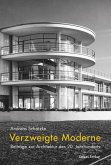The largely unknown oeuvre of the Philippine architect Leandro V. Locsin (1928-1994) embodies the search for identity in the built environment.
Having completed his studies, Locsin opened his practice in 1953 in the capital Manila which, after the aerial attacks by the Allied forces for the liberation of the Philippines from Japanese occupation, had been almost completely destroyed. The reconstruction, as well as technical innovations and favorable political and economic conditions, made it possible for him to design a wide range and large number of projects, including hotels, commercial buildings, churches, cultural venues, and public buildings.
His work combines inspiration from modernism with local traditions and comprises a total of 245 projects, of which more than half were completed. The book presents a selection of the most important buildings and projects.
Having completed his studies, Locsin opened his practice in 1953 in the capital Manila which, after the aerial attacks by the Allied forces for the liberation of the Philippines from Japanese occupation, had been almost completely destroyed. The reconstruction, as well as technical innovations and favorable political and economic conditions, made it possible for him to design a wide range and large number of projects, including hotels, commercial buildings, churches, cultural venues, and public buildings.
His work combines inspiration from modernism with local traditions and comprises a total of 245 projects, of which more than half were completed. The book presents a selection of the most important buildings and projects.
Dieser Download kann aus rechtlichen Gründen nur mit Rechnungsadresse in A, B, BG, CY, CZ, D, DK, EW, E, FIN, F, GR, HR, H, IRL, I, LT, L, LR, M, NL, PL, P, R, S, SLO, SK ausgeliefert werden.



